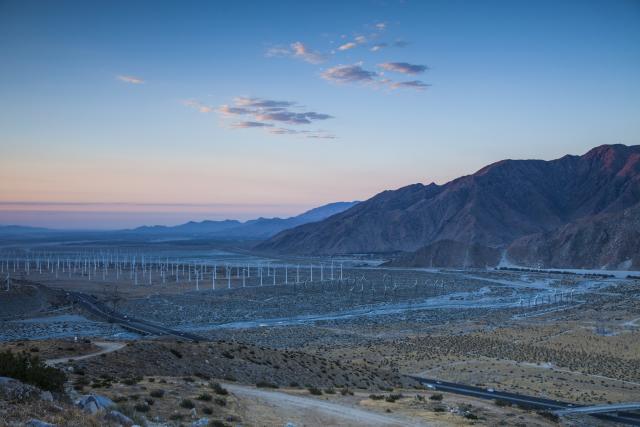BLM invests $4.9 million for wildlife data to inform clean energy growth
Organization:
Media Contact:
WASHINGTON – As part of President Biden’s Investing in America agenda, the Bureau of Land Management today announced a $4.9 million investment from the Inflation Reduction Act to gather data on special status species and wildlife that will lead to more efficient and timely reviews of renewable energy and transmission proposals while improving conservation outcomes.
“As the country moves to tackle climate change and reduce emissions, the demand for clean, renewable energy has never been greater,” said BLM Director Tracy Stone-Manning. “Utilizing investments from President Biden’s Inflation Reduction Act to proactively understand impacts of clean energy development to wildlife species will give the BLM the necessary information to speed responsible renewable energy permitting and yield improved conservation outcomes.”
The Inflation Reduction Act —the largest climate investment in history —provides $1 billion to help strengthen and accelerate federal permitting and environmental reviews, including through enhanced data and analytics. The investment in data-gathering to inform renewable energy project siting is one way the Biden-Harris administration is using these resources to help achieve the goal of a carbon-free power sector by 2035, as well as Congress’ direction in the Energy Act of 2020 to permit at least 25 gigawatts of solar, wind and geothermal production on public lands no later than 2025.
This data collection can proactively reduce risks to wildlife and habitats by informing siting of renewable energy projects and development of effective wildlife design features and mitigation strategies even before project proposals are received by the agency. Early development of conservation measures helps to avoid and minimize impacts to many species, assists developers with project planning, and streamlines permitting processes. This enables the BLM to facilitate environmentally-sound renewable energy development on public lands.
The BLM expects this effort will result in useful knowledge pertaining to such topics as:
- regional inventories of eagles and other migratory bird species;
- desert tortoise habitat use and connectivity at landscape levels;
- special status species distribution in areas of high geothermal resource development potential;
- predictive modeling for big game seasonal habitat use and movement corridors;
- research on thermal effects of solar facilities to plant life and wildlife habitat;
- regional surveys in California and New Mexico to gain rare plant species data; and
- regional inventories for pygmy rabbit habitat.
The work from this investment supplements other ongoing BLM efforts, such as migratory bird and bat surveys; amphibian and reptile studies; and collecting enhanced LiDAR (laser remote sensing) across the California desert renewable energy development area to identify habitat, resources, and potential issues earlier in the permitting process.
The BLM manages more than 245 million acres of public land located primarily in 12 western states, including Alaska, on behalf of the American people. The BLM also administers 700 million acres of sub-surface mineral estate throughout the nation. Our mission is to sustain the health, diversity, and productivity of America’s public lands for the use and enjoyment of present and future generations.

